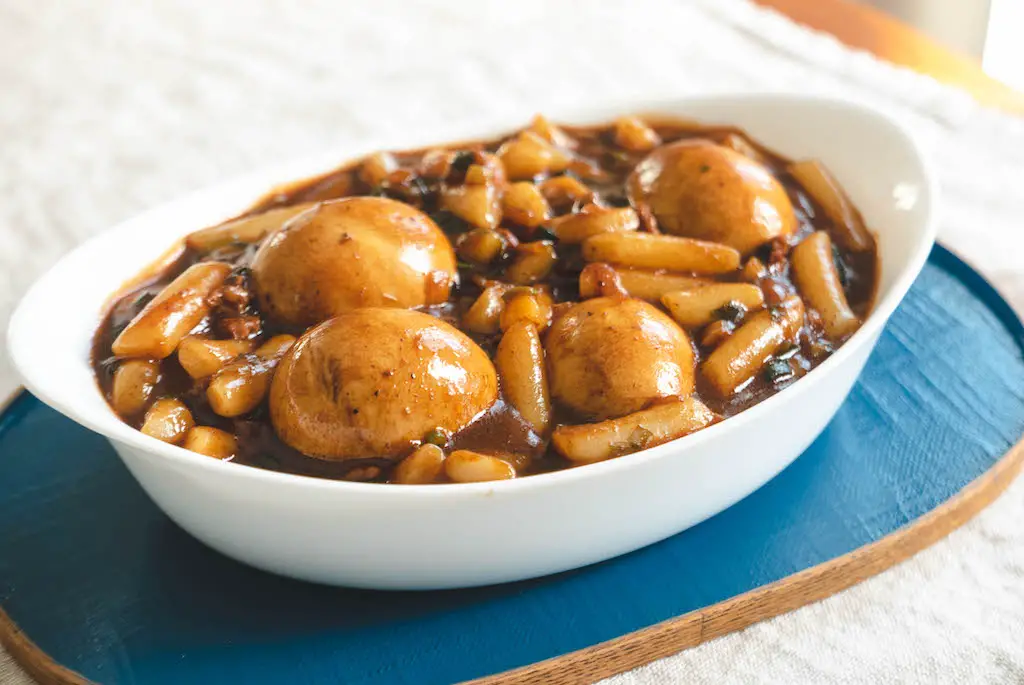This post may contain affiliate links. Please read my disclosure for details at the bottom of this page. As an Amazon Associate, I earn from qualifying purchases on this one-pot jajang tteokbokki recipe (Korean rice cakes with black bean sauce) recipe.
Do you enjoy eating ‘tteokbokki’ (떡볶이), a Korean dish made by mixing rice cakes in spicy red sauce? What about ‘jajangmyeon’ (짜장면), a Korean-Chinese noodle dish made with a fermented black bean sauce? If so, you will love ‘jajang tteokbokki’ which combines the rice cakes from the tteokbokki with the sauce from the jjajangmyeon.
I first heard of jajang tteokbokki when Gabie Kook made it on her Youtube channel during the first round of quarantine. Since then, I often make this when I crave the sticky texture of rice cakes without the heat from the spicy red tteokbokki sauce. It is the perfect dish to eat when craving something sweet and savory. Just know that there is nothing healthy about this dish! It is the perfect ‘guilty pleasure.’
Here, we will make our one-pot jajang tteokbokki recipe. But, before we get to the recipe, I will teach you all about jajang tteokbokki as well as answer some potential questions you may have about this dish.
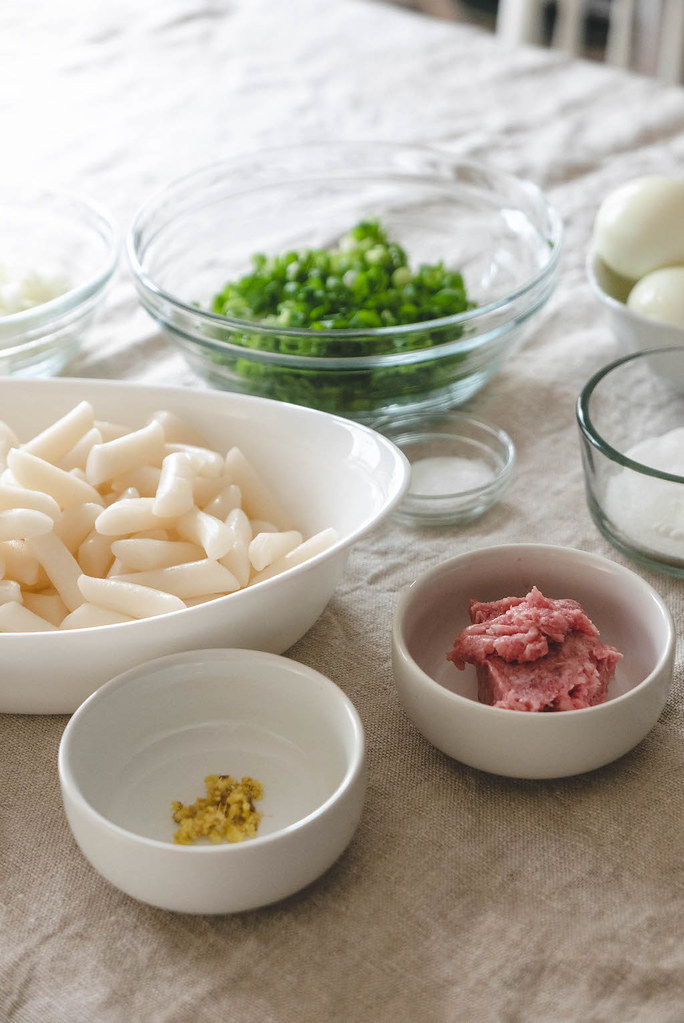
What Is Jajang Tteokbokki? (Korean Rice Cakes with Black Bean Sauce)
To make jajang tteokbokki, you combine the dark brown Korean-Chinese ‘jajang’ sauce and ‘tteok’ rice cakes. The resulting dish is sweet and savory. Below, we explain how to make jajang as well as tteok.
What is Jajang?
The word ‘jajang’ (자장) in the Korean language derives from a Chinese word meaning ‘fried sauce.’
To make jajang, you first start with preparing the ingredients. First, you need ‘chunjang’ (춘장), otherwise known as sweet bean sauce, sweet flour sauce, or sweet wheat paste. For a helpful reference when shopping in many grocery stores, chunjang is known as ‘tianmian’ sauce in Chinese. This paste-like Asian ingredient is extremely thick and smooth, much like creamy peanut butter. Further, it has a dark brown, almost black, opaque coloring. Finally, it typically has a mild fermented and salty taste, but the flavor can range from more savory to sweet based on the brand or recipe used.
To make the jajang sauce, you fry the chunjang, often with other ingredients. A jajang sauce can include ingredients such as:
- Soy Sauce or Oyster Sauce
- A Base Stock
- A Thickening Starch (Such as Corn or Rice)
- Meat (Such as Pork or Beef)
- Seafood (Such as Squid, Octopus, or Shrimp)
- An Assortment of Vegetables (Such as Onions, Zucchini, Korean Zucchini, Peas, Carrots, or Cabbage); and
- Flavor Enhancers (Such as Garlic, Ginger, or Scallions)
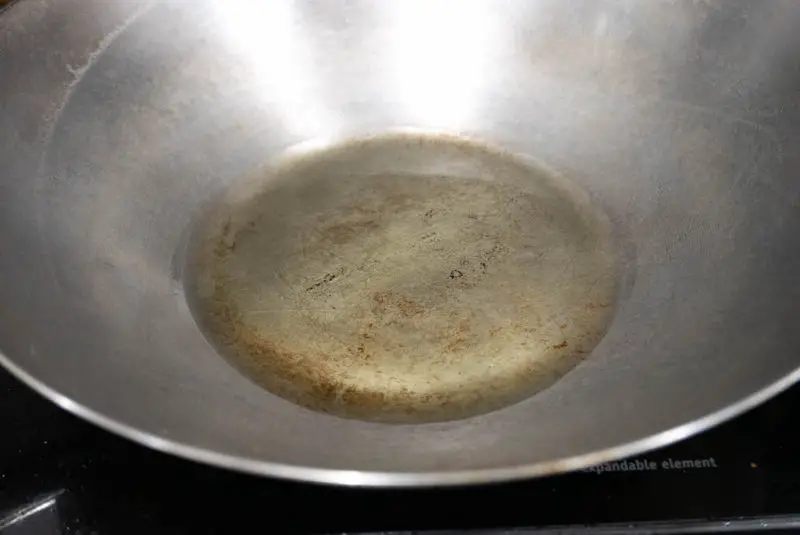
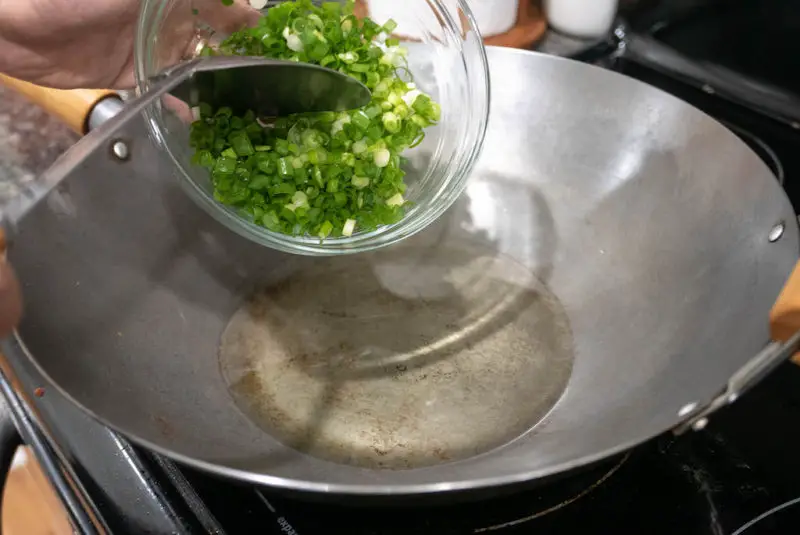

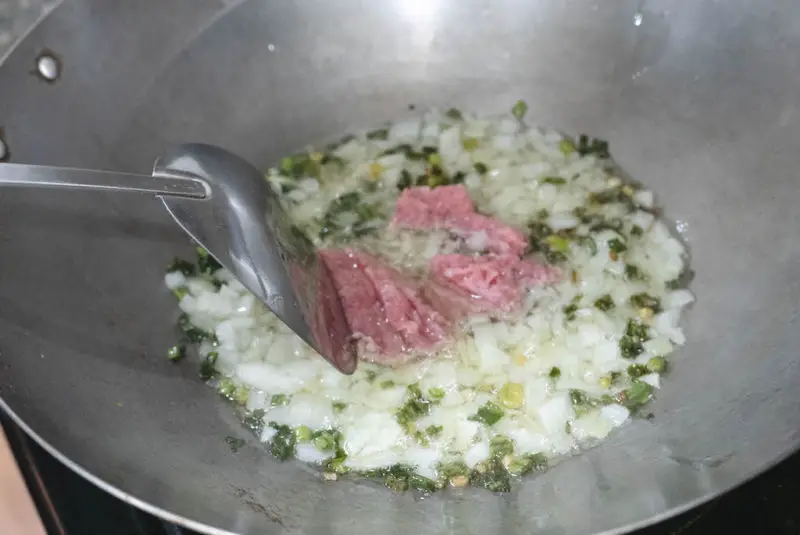
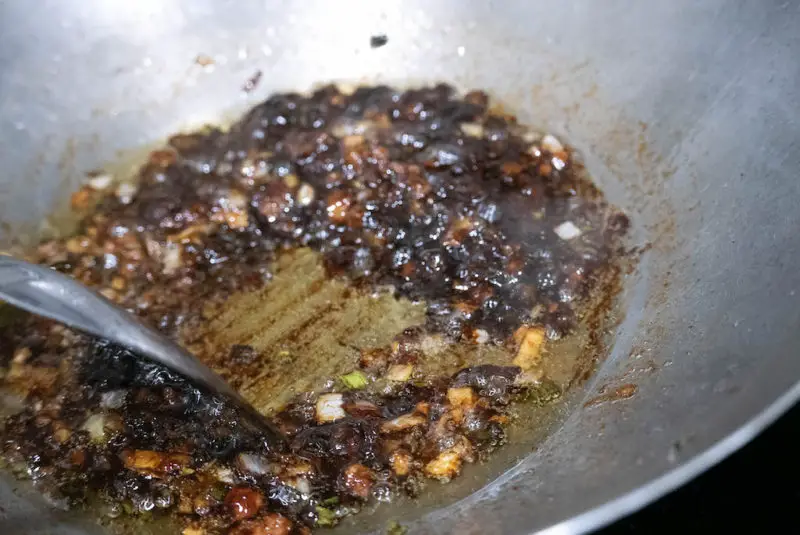

Once fried and mixed, you get a dark brown, almost black sauce that tastes a bit sweet, deeply rich, and savory. This fried sauce is known as ‘jajang’ sauce! People use this sauce to make ‘jajangmyeon’ (Korean jajang noodles) and ‘jajang-bap’ (Korean jajang sauce and rice).
Then, once you finish making the sauce, you need to prepare the tteok for the jajang tteokbokki.
What Are Tteok?
Korean ‘tteok’ is a type of rice cake made from different types of steamed flour such as glutinous rice, non-glutinous rice, and wheat flour. Based on the type of tteok you are making, you can either form rice cakes by steaming, pounding, boiling, or pan-frying the ingredients.
The tteok used for tteokbokki is known as ‘garae-tteok’ (가래떡)–a type of a pounded rice cake made from non-glutinous rice flour that is shaped into a long cylinder.
Besides tteokbokki, ‘garae-tteok’ is used to make tteokguk (떡국), a rice cake soup that is often eaten during Korean New Year celebrations. When used in the soup, people thinly slice the rice cakes diagonally.
I also use garae-tteok to make tteokkochi–a delicious Korean street food made by grilling tteok on a skewer and covering it with a delicious spicy red sauce.

Frequently Asked Questions About Jajang Tteokbokki:
Now that we learned about jajang sauce, tteok, and jajang tteokbokki, we can answer some questions you may have about this dish. If we did not answer your question, feel free to leave your question in the comment section below or email us at [email protected]
Can You Make Jajang Tteokbokki Gluten-Free?
Almost always, jajang sauce contains gluten. I would never recommend eating jajang sauce in restaurants if you have a wheat allergy or celiac disease. For years, my husband and I looked for gluten-free ‘chunjang’ (춘장) to make jajang sauce. Finally, a company in South Korea released a gluten-free chunjang brand!!!
At this time, we buy from the website ‘Hanpoom,’ a Korean website that ships to the United States. Unfortunately, this website is only in the Korean language. While we found the sauce on one or two other sites, we could not find much information to confirm their validity as a company at this time. So, we recommend ordering from ‘Hanpoom.’
Below, I list how to order from the website. I know it is a pain to order something in Korean. Hopefully, I will find gluten-free chunjang available with an English website in the future! Please know this is not a sponsored or affiliate product.

How to Order from Hanpoom:
- First, create an account. In the top right-hand corner, there is a button in Korean written as ‘로그인.’ Or, just click here for the login page. Next, click on the button that says ‘회훤가입.’ This takes you to a page to create an account.
- Then, create a username in the top box, write your email in the next box, a password in the third box, and finally confirm your password in the fourth box. Creating an account allows you to order.
- Then, in the search bar copy and paste ‘춘장.’ You will see the chunjang sauce with a huge gluten-free marker.
- Next, add quantity and click the bright red button with the words ‘장바구니.’ To deliver to the United States, you must order past a certain price point. At this time, I believe it is 70 dollars. You can shop around for other Korean ingredients. This company also makes gluten-free ssamjang, doenjang, and gochujang.
- Finally, on the right-hand side, change the shipping location to the United States. Hit the big red button and it will lead you to shipping with English instructions! To check out, once again, hit the big red button.
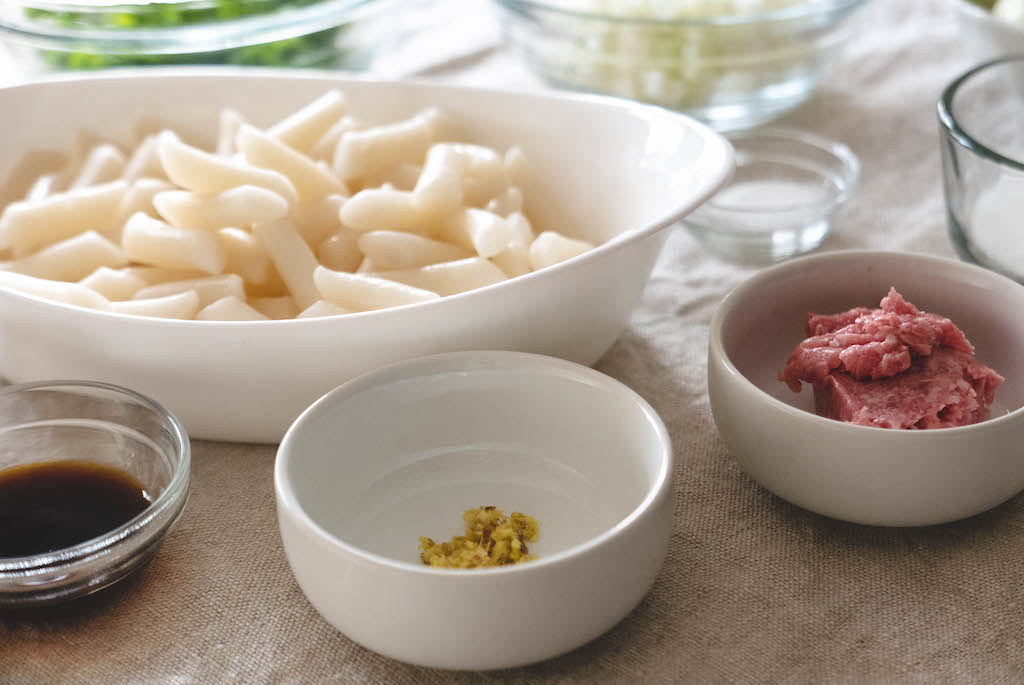
Finally, for this recipe, you need to use gluten-free soy sauce, gochujang, and oyster sauce. You can easily find these on Amazon or in your local well-stocked grocery store. Also, you may need to omit the Korean fish cakes if you cannot find a gluten-free version.
Can You Make This Dish Vegetarian or Vegan?
To make jajang tteokbokki vegetarian or vegan, you can omit the pork from the recipe. If you do, the dish may not taste truly authentic because almost all jajang sauces used in Chinese restaurants in South Korea uses pork. Also, you should omit the Korean fish cake as well!
Though it will not taste truly authentic, it will still taste delicious!
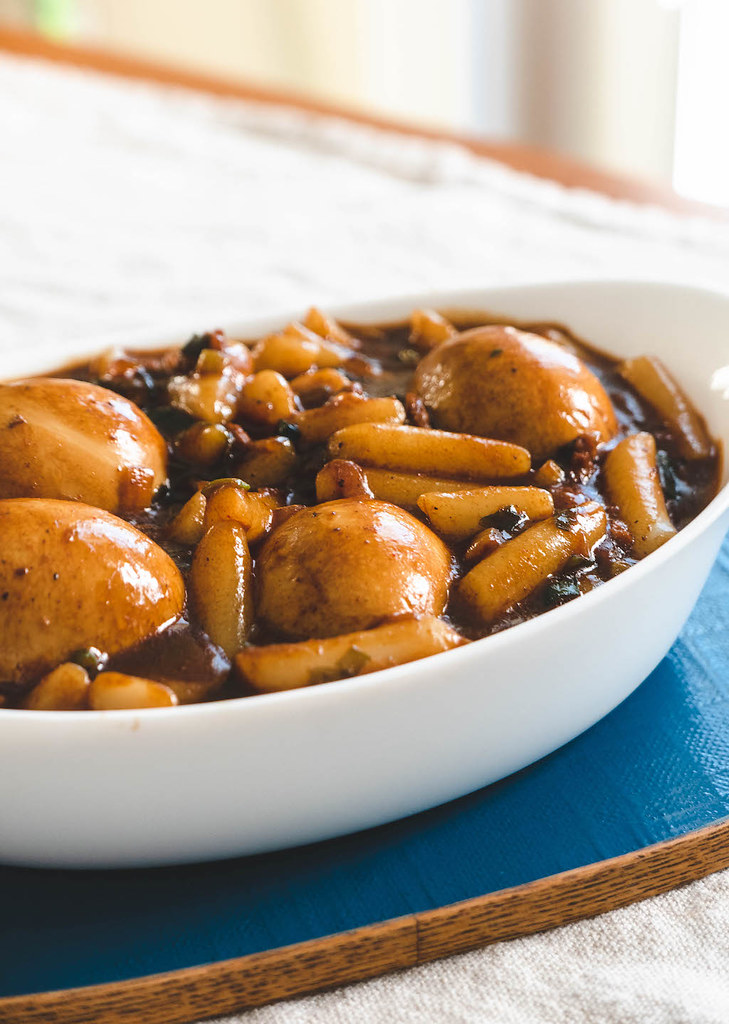
What If My Sauce Does Not Thicken?
If your rice cakes finish cooking and do not fully thicken the jajang sauce, you can add a slurry of cornstarch and mix it into the jajang tteokbokki. To do so, combine ½ TBSP of cornstarch and ½ TBSP of water, stirring it quickly until fully combined with no clumps. Then, while stirring the jajang tteokbokki, slowly pour in the cornstarch and water mixture.
After you stir for a few seconds, the sauce will thicken.
How Can I Store the Leftovers?
All tteokbokki tastes best the day it is made. If you cannot finish the dish, place the jajang tteokbokki into an airtight container and put it in the refrigerator. Then, I recommend reheating the dish in a pot over medium heat. The tteok will soften again as you stir.
I recommend eating leftovers in 1-2 days.
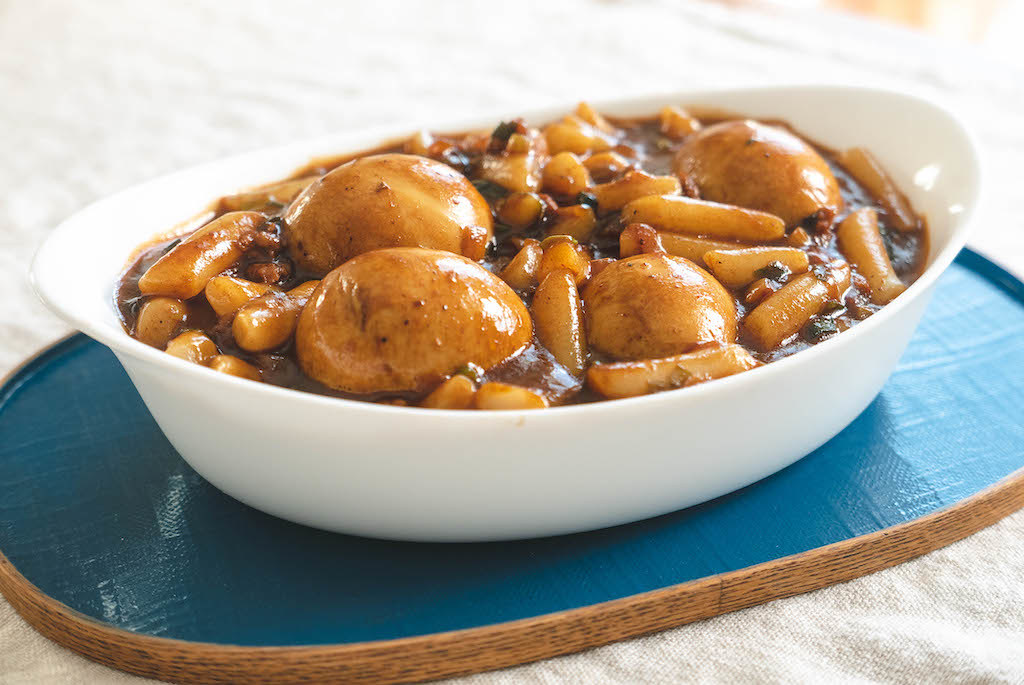
We Hope You Enjoyed Learning About How to Make One-Pot Jajang Tteokbokki!
In the end, we hope you enjoyed learning about how to make jajang tteokbokki. If so, let us know in the comment section below.
If you would like to read more about cooking, you can find further recipes on our blog. We listed some of our favorite Carving A Journey recipes below! For reference, many recipes are influenced by our blended Korean and Southern heritage.
Further Carving A Journey Recipes:
- Tteokkochi (Korean Rice Cake Skewers)
- Rice Paper Tteokbokki
- Korean Sweet Potato Latte; and
- How to Perfectly Bake a Korean Sweet Potato
If you have any questions or comments, you can also email us at [email protected].
And, finally, we would love to hear from you through our social media as well! You can follow us at @carvingajourney on Instagram, Twitter, Facebook, and Pinterest. Or, if you would like more articles like these, you can subscribe to our blog by joining our mailing list. We hope you enjoyed learning about how to make jajang tteokbokki! Thank you so much for stopping by!
Carving A Journey is a participant in the Amazon Services LLC Associates Program, an affiliate advertising program designed to provide a means for sites to earn advertising fees by advertising and linking to Amazon.com. Although we may earn commissions for our endorsement, recommendation, testimonial, and/or link to any products or services from this website, these opinions are my own and I fully support these products.

